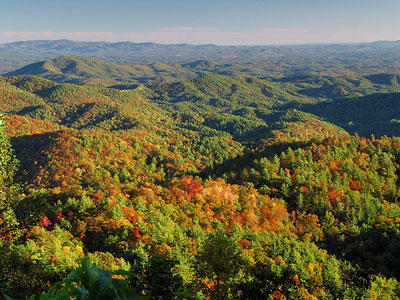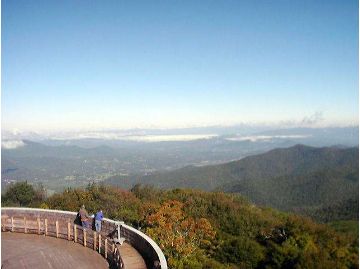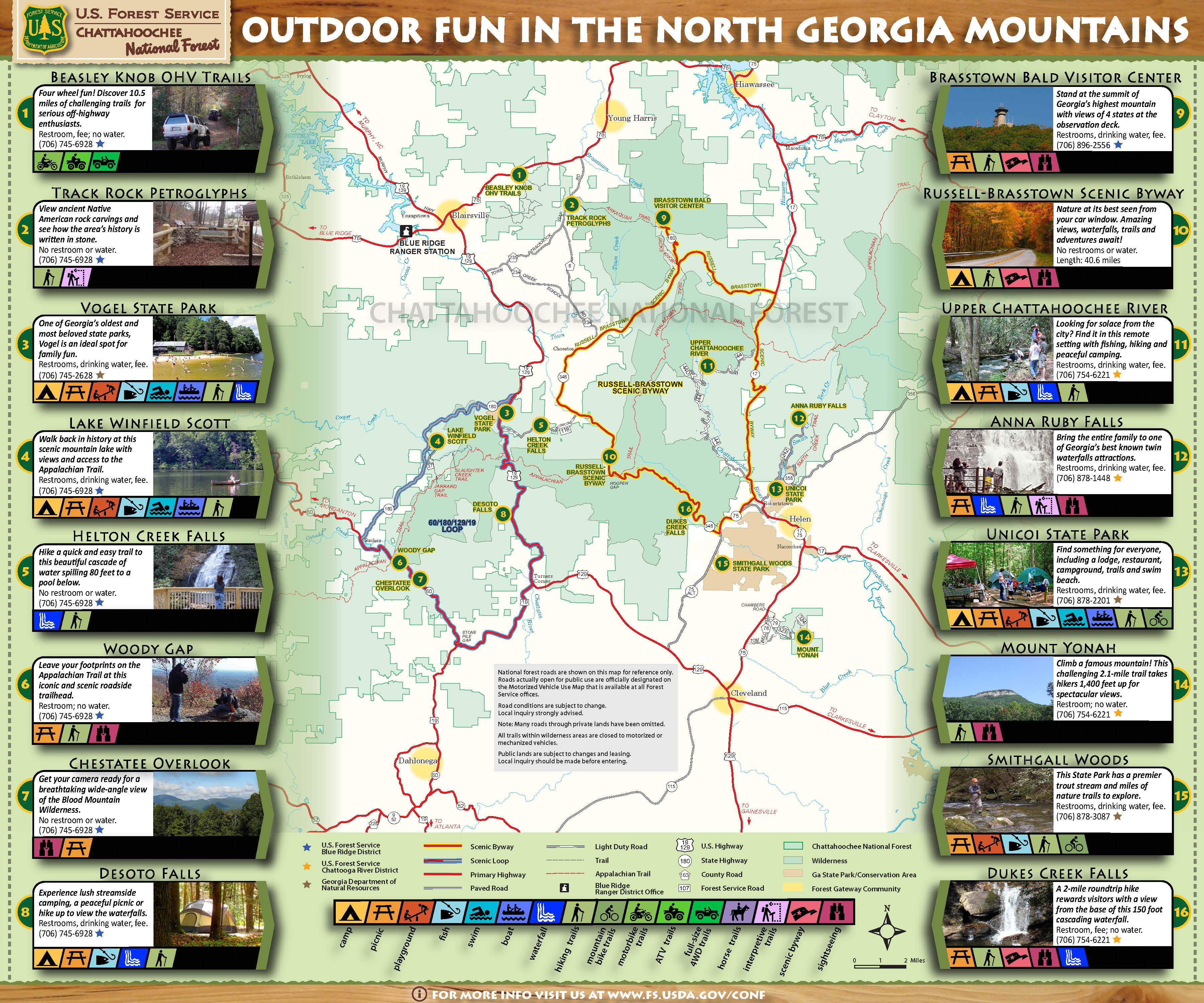Mobile App and Fall Colors
![]() Before you take in the beauty of our national forests, make sure you download the Forest Service’s new mobile app. It will help you get to where you want to go and it’s all in the palm of your hand! Download the new app before you hit the road. The app is available through both Apple App Store and Google Play.
Before you take in the beauty of our national forests, make sure you download the Forest Service’s new mobile app. It will help you get to where you want to go and it’s all in the palm of your hand! Download the new app before you hit the road. The app is available through both Apple App Store and Google Play.
View the Interactive Visitor Map for the Chattahoochee-Oconee National Forests.
You may also find nationwide U.S. Forest Service updates:





or on the web: www.fs.usda.gov
Chattahoochee-Oconee National Forests
Fall Colors
Are you ready for fall color? The National Forests are a great place to view autumn splendor! In the earliest part of the fall season, the highest peaks in north Georgia are the first to turn brilliant reds and yellows. These early heralds of fall color include tulip poplar, dogwood and maple trees.
As usual, colors will cascade down the mountains starting at the highest peaks. From those lofty ridges, color will eventually work down into the valleys, with ‘peak’ colors dropping approximately 1,000 feet in elevation every week.
The week of October 24 is typically the peak for the north Georgia mountains.
What to see

One of the scenic views on the Chattahoochee National Forest. (Forest Service photo). Free, high resolution, fall color photographs from across the National Forests are also available at www.flickr.com/photos/chattoconeenf/albums

Take in 360-degree views atop the 4,784 feet Brasstown Bald. Enjoy the view from Georgia's tallest mountain with live, streaming webcams no matter where you are standing at the observatory.
Where can I see them?

- Hiking: Hiking is one of the best ways to see fall colors, with several day hike trails available across the national forest. A favorite early in the season is the short .02 miles to Helton Creek Falls south of Blairsville is a great way to see high elevation colors and an 80 foot water fall too.
- Driving: Easy driving tours are also readily available through the mountains in the fall. Top suggestions include:
- Russell-Brasstown National Scenic Byway
- U.S. Highway 76 between Blairsville and Clayton
- State Highway 197 between Clarksville and U.S. Highway 76
- Recreation.gov - Make reservations and plan your outdoors trip.
- Interactive Visitor Map
- Planning a road trip? Travel a Scenic Byway!
- Find and visit a national forest or grassland in other States
- Fall Colors around the world
- Find updates by following #FallColor Tweets or updates from the Georgia Forestry Commission and the GAStateParks. Also visit ExploreGeorgia.com Official Georgia Tourism and Travel Site.
- A printable map of the favorite scenic drives, waterfalls and other recreation spots in north Georgia. Find even more maps of all types.
Fall Color Viewing Tips
Be prepared to be outdoors in cool temperatures and rapidly changing conditions - Know Before You Go. Always remember safety first and bring:
- Hat and a sweater or jacket
- Good walking shoes
- Water
- Snacks or a picnic lunch
- Autumn Awareness in the National Forest
- Learn more Outdoor Tips for Planning a Successful Adventure on Your National Forest
- Outdoor Safety - A useful guide to a safe outdoors.
- Learn to pack a survival pack – Useful info when out in the great outdoors.
Why do leaves change color anyway?
Leaves turn green each spring as they use pigments (chlorophyll, xanthophyll, and carotenoids) to harness the sun’s energy. The chlorophyll absorbs red and blue wavelengths but not the green ones that are reflected back to our eyes. In other words, the other ‘fall’ colors are always there, they are just hiding underneath the chlorophyll!
As temperatures cool and days get shorter, leaves on deciduous trees stop producing new chlorophyll, and the familiar green color breaks down to reveal the other pigments that have been masked all season. Chlorophyll is expensive to make (for the tree); so when there isn't enough light to make it worth expending energy on, the green fades and the colors beneath show. Learn more about Fall Colors Science.
Learn more about fall color
- Leaf Coloring Pages US Forest Service
- Fall Colors Resources – Lots of info on trees.
- Arbor Day Foundation – Make your world greener.
- Untamed Science – Learn about nature the fun way.
- U.S. National Arboretum – A natural treasure in Washington, D.C.
- The Science of Color in Autumn Leaves US National Arboretum
- Fall Color Pictures Virginia Tech
- Georgia Forestry Commission fall color transitions
- GAStateParks updates
- Fall Colors Arriving - view from space!


